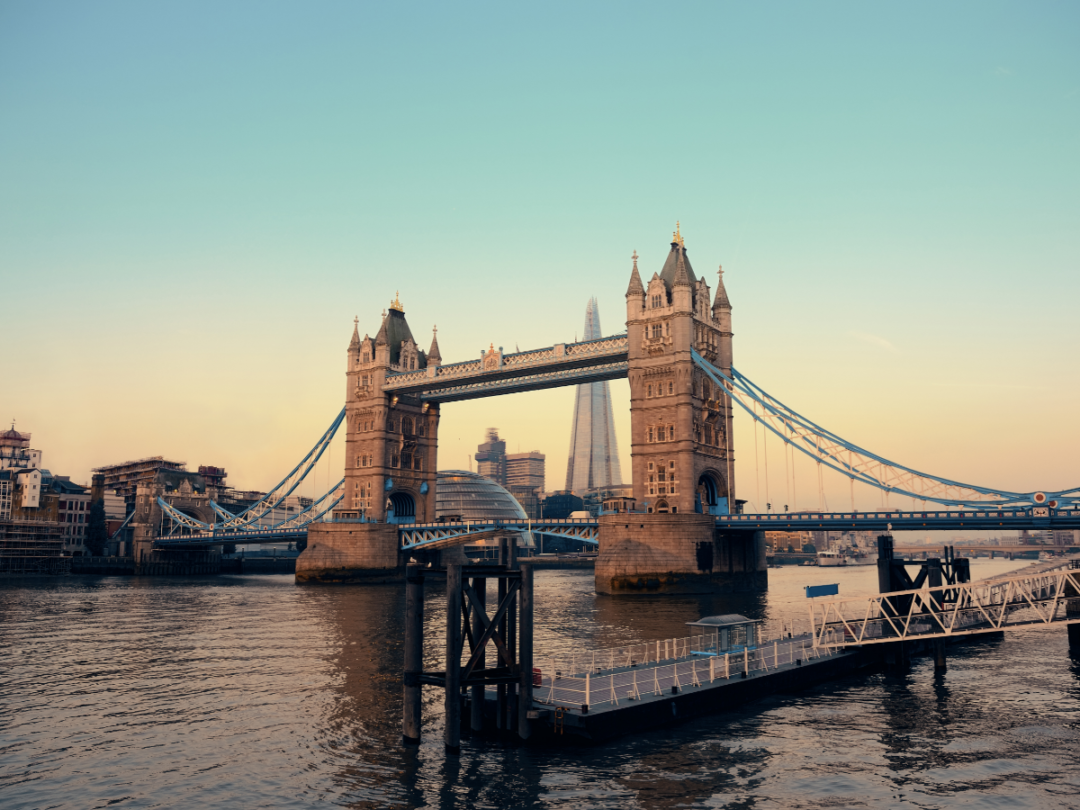
Visit Our Sponsors |
|
|
|
|
|
|
|
|
|
|
|
|
|
|
|
|
|
|
|
|
|
|
|
|
|
|
|
|
|
|
|
|
|
|
|
|
|
|

Cathryn Spain spends most of her workdays motoring up and down the River Thames, a senior harbormaster making sure goods flow through the Port of London without incident.
“A typical day for me is responding to things that go wrong, so hopefully that doesn’t happen too often,” she said one morning on patrol in early July. “We’re here responding to any situations that arrive, difficulties that people have. Yeah, it’s basically getting things sorted.”
That’s Spain’s modest way of saying she ensures traffic — bringing goods from the other side of the world, or from just across the Channel — moves efficiently and safely. So ships find their way in the fog. Or paddle boarders don’t wind up on the wrong end of the tide. Or jet skiers respect the massive container vessels that helped make London’s port the biggest in the U.K. last year for the first time in two decades.
Tourists and locals alike would have a hard time spotting London’s port from Tower Bridge or Big Ben. Try looking from atop the rotating Eye and you’ll need binoculars. The biggest hub of global commerce a century ago resides some 25 miles downstream from the heart of the city, near deeper water so ever-bigger ships can come and go more easily.
“There is a sort of perception that the port is something of the past. We’ve done some studies on this and people think the biggest ports in the U.K. are Portsmouth or Southampton or Felixstowe,” said Robin Mortimer, chief executive of the Port of London Authority. “It’s a little bit out-of-sight-out-of-mind for people.”
The authority, set up in 1909 to nationalize the city’s hodgepodge of private docks and be the caretaker for the waterway, hopes the pandemic marks a turning point to change both perceptions and reality. As three national lockdowns boosted online shopping over the past 18 months in the U.K. like most other places, the demand for port services like warehousing and distribution closer to population centers took off, too.
London’s major trade terminals, DP World’s Gateway and the Tilbury docks operated by Forth Ports, are trying to capitalize on this shift. Gateway, opened in 2013, is a modern container facility with three berths and three more planned. Tilbury, which opened in 1886 and has welcomed generations of immigrants to England’s shores, handles containerized, bulk and general cargo, hosts cruise ships and opened a new freight ferry terminal last year as part of a £250 million ($345 million) investment.
Meanwhile, Amazon facilities are springing up along the riverbank east of the city. The port authority is buying up land and old wharfs, and planning to help develop London’s first shipyard in a century. Cruise ship bookings from Tilbury this year and next are rolling in again. The delivery giant DHL is running packages daily from a point upriver near Heathrow airport to Bankside wharf in the center of town. CEVA Logistics started in June delivering medical supplies up and down the river.
The freight moving on the river is small-scale for now, but Mortimer says more companies are looking to have their logistics services closer to cities, reversing the decades-long march toward cheaper real estate and transport costs connected to cities by trains and trucks. Warehousing, distribution centers and light manufacturing are moving closer to the city as a way to reduce truck traffic and air pollution — so the river may see more local cargo traffic because of it.
But it’s not merely commerce that’s seeing a revival on the Thames. Londoners suffering through stay-home orders became kayak owners or paddle boarders at the click of a mouse. So the port authority is trying to reduce pollution and enforce safety rules so outdoor enthusiasts can coexist with the commercial traffic.
On her daily harbor patrol, Spain sees traffic picking up, including “a lot more individuals using the river for recreation” and record volumes through the ports, she said.
“The river will be a very different place hopefully environmentally and socially,” said port authority spokesman Nick Tennant. “As in other great cities around the world, rivers are and should be central to the way of life.”
RELATED CONTENT
RELATED VIDEOS
Timely, incisive articles delivered directly to your inbox.






